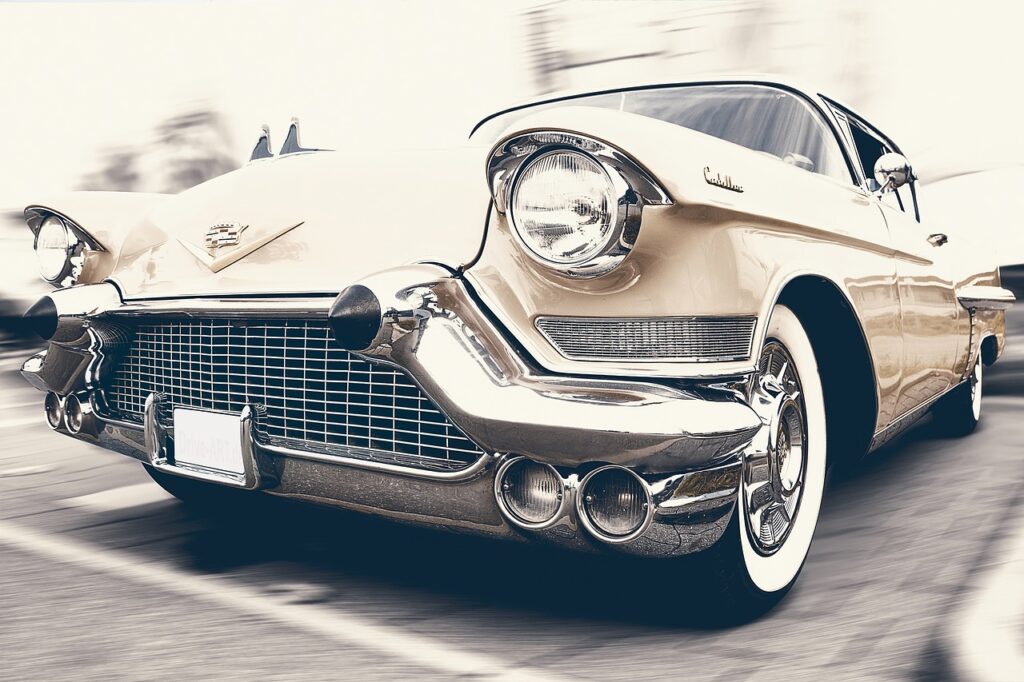Are you one of the 49% of classic car owners who feel the pressure of sustainability? A Footman James survey reveals that nearly half of vintage vehicle enthusiasts worry about the future, particularly in terms of finding eco-friendly fuel and spare parts. In today’s climate-conscious world moving swiftly towards net-zero carbon emissions, it might seem that these beloved classics are on the brink of becoming unfashionable dinosaurs.
However, don’t be too quick to surrender the keys to your vintage autos! Advanced technologies now offer pathways to retrofit classic vehicles for the modern world. Let’s explore how innovative solutions are reviving and redefining what it means to drive and love classic cars in today’s sustainable-focused society.
Tech Supports Resto-mod Concept in Old Car Models
Resto-mod is a popular concept that helps automobile enthusiasts transform vintage cars into modern machines without changing their classic aesthetics. Technology plays a vital role in the modification process by providing sustainable manufacturing methods to remake old car components for modification.
Ideally, you can modernize your classic car with power steering, entertainment systems, and engines, all made using 3D printing. 3D printing or manufacturing involves creating automobile parts by adding raw materials bit by bit instead of subtracting, thus reducing waste.
Examples of Resto-mods
Singer Porsche 911 and Iconic Bronco are perfect examples of resto-mods or modern classic cars. Modified by Singer, the reimagined Porsche 911 features optimized aerodynamics for high-speed stability and customized interiors for comfort. The engine options range from 3.8 to 4 liters and a horsepower of 300 to 390 for enhanced performance. The Iconic Bronco is a modern version of the Ford Bronco. It features a 5-liter V8 engine and ten-speed automatic transmissions that provide 0-60 mph in under five seconds.
These modified classic cars prove that combining old-school features with technology helps create retro and functional vehicles. Parts you should alter in your classic car are tires, engine, brakes, steering system, and lights.
Electric Conversions Promote Sustainability
The original design of classic car engines limits them to run on gasoline, which is bad for the environment. However, with the help of technology, you can revamp your old vehicle into an electric car through electric conversions. Today, auto dealers install electric motors and lithium batteries in classic cars to make them environmentally friendly.
Converting classic cars is a complex process that requires careful planning. Since the original design of vintage vehicles doesn’t house electric drivetrains, mechanics must make significant changes to integrate modern electric technology. This means you’ll have to budget for extra modifications on the body. Typically, people spend an average of $40,000 to $100,000 on electric conversions. Plus, the originality of classic cars might be lost during electric conversions.
However, the benefits of electrifying vintage cars outshine the challenges. Besides making vintage vehicles roadworthy and free of carbon emissions, electric conversions reduce maintenance costs, extend the lifespan, and increase the vehicle’s overall value. To boost your car’s value after electrification, ensure it’s in good condition with a high historical value.
Examples of Electrified Classic Cars
The electrified Land Rover Defender is an excellent example of successful conversions of vintage vehicles. Converted by E.C.D., the electrified Defender features a 450-horsepower drivetrain reclaimed from Tesla. This drivetrain gives the Defender a range of 220 miles. Other successful electric conversions you can draw inspiration from include the Volkswagen Campervan, Mini Cooper, Jaguar E-type, and Porsche 911 964.
Tech Makes Classic Cars Convenient
Many people invest in classic cars because of their timeless aesthetics and handcrafted designs. However, driving vintage vehicles over long-distance can be difficult. Older models lack modern amenities like GPS navigation, aerodynamics, and air conditioning that enhance comfort and convenience. For this reason, many individuals prefer shipping classic cars to auto shows instead of driving them.
Choosing the right shipping company can help protect your classic car from harsh weather, road debris, and theft. But even with the option of shipping classic cars, you should upgrade your vintage ride with advanced features to boost convenience.
For example, adding a GPS to your classic vehicle makes navigation on modern highways easy. You could also fit radial tires into your vintage car to enhance performance. Compared to bias-ply tires, radial tires offer better grip when taking corners and reduce rolling resistance, improving fuel efficiency.
You can elevate entertainment in your vintage by installing an up-to-date audio system. Think of adding audio controls that look original but with Bluetooth, modern speakers, and smartphone input like Apple CarPlay functionality. Porsche, for instance, has added a new set of touchscreen units that fit into the 911 dashboard and support the Apple CarPlay function.
Modified Cars Are Safe
Another benefit of integrating technology in classic cars is enhanced safety. For example, installing wireless backup cameras in your Porsche 911, Mini Cooper, or Volkswagen Beetle helps prevent accidents. You can view your surroundings while driving, so you don’t hit objects or other road users. Replacing drum brakes with disc brakes also goes a long way in enhancing the handling and safety of classic cars.
Keeping classic cars on the road has become difficult as the world aims to reach net-zero emissions. But this doesn’t mean your vintage automobile should stay in the garage. You can make your classic vehicle eco-friendly, safe, and convenient by modifying it with technology. Consider replacing your car’s old engine with electric motors and batteries. Upgrade the brake system with disc brakes and opt for radial tires. Then, accessorize with a modern infotainment system, GPS, backup cameras, and heads-up display.
- How Modern Technology Is Keeping Classic Cars On The Roads - September 28, 2023
- Innovation Through Music – How Production Tech Is Expanding Genres - August 11, 2023
- Mu6label: The AI-Powered Device That Helps You Learn Guitar - July 8, 2023




Comments are closed.